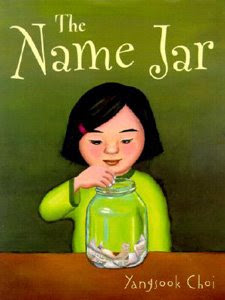Royer, Danielle, and Shaina Rudolph. All my Stripes: A Story for Children with Autusim, Illustrated by Jennifer Zivoin and Alison Singer. Washington D.C.: Magination Press, 2015. ISBN: 9781433819179
Plot Summary:
Zane is a zebra who attends school but is self-conscious about his schoolmates only noticing his Autism stripe. He endures so many ventures in school; however, he doesn't endure them like all of the other children. When the fire alarm goes off, the noise is too loud. When he's in art class and has to paint, he doesn't want the paint to get on his hooves. After all of these instances, Zane finds comfort in his mother's words to endure the events that occur in his everyday life of being a student.
Critical Analysis:
All My Stripes is a children's picture book that depicts certain aspects of autism. The authors, Shaina Rudolph and Danielle Royer, do an excellent job by using parallelism through the stripes of a zebra. Zane the zebra is a child in class who feels as if everyone only sees his autism; however, his mother assures him that there is more to him than that. The authors incorporate some of the characteristics of autism such as sensitivity and fear to abrupt noises, creating new elements, and a sensitivity to getting messy. By including these aspects, readers are provided with understanding of some of the things that differ in autistic people. The authors also collaborate with Jennifer Zivoin who provides beautiful illustrates to coincide with the story. They demonstrate symbolism by using the different stripes of a zebra as character traits, as well as explaining through illustration and context the importance of why everyone is different. The authors and illustrator do a beautiful job of explaining autism to not only autistic children, but to those who may not know what it entails.
Review Excerpts:
"Does your child feel different from or misunderstood by his or her peers? If so, he or she will relate to Zane, an adorable zebra who is having a hard day at school. From not wanting to get paint on his hooves during an art project, to being overwhelmed by the sound of the fire alarm to having trouble socializing with his classmates, Zane is having a tough time fitting in. “How come all anyone sees is my autism stripe?!” he asks his mama, who explains that we all have many different stripes that make us unique and special. Zane, for instance, has a pilot strip, a caring stripe, an honesty stripe and a curiosity stripe, to name a few. Zane realizes all of his stripes—including his autism stripe—make him who he is, and he loves each one. Authors Rudolph and Royer have created an endearing story about a zebra on the autism spectrum and the common sensory and social difficulties that leave some children feeling upset, sad and frustrated. They show Zane trying to process situations that are common for children. A story of empowerment, Zane shows how we can accept our differences, and learn to embrace our unique attributes, and thrive. Zivoin brings this cute zebra to life with endearing illustrations in vibrant colors. A reading guide discusses Zane’s dialogue and actions in the story. A note to parents and caregivers discusses diagnosis and treatment.This story is a wonderful teaching tool for initiating a helpful dialogue about Autism Spectrum Disorders (ASD)." - Children's Literature
"Rudolph and Royer shine a light on the autism spectrum, but go a step further and show how endearing, unique and beautiful the children are in this inspiring story about embracing differences." - Children's Books HealConnections:
Customers who bought this book also purchased My Brother Charlie, Understanding Sam, and Since We're Friends.
Interactivity:
- Ask children if there's anything that makes them special or unique.
- Educate children on Autism and what it's like for a child with Autism.
- Ask children if they have ever felt left out from their peers and why, and allow them to suggest ways that they would've included those who were left out.












